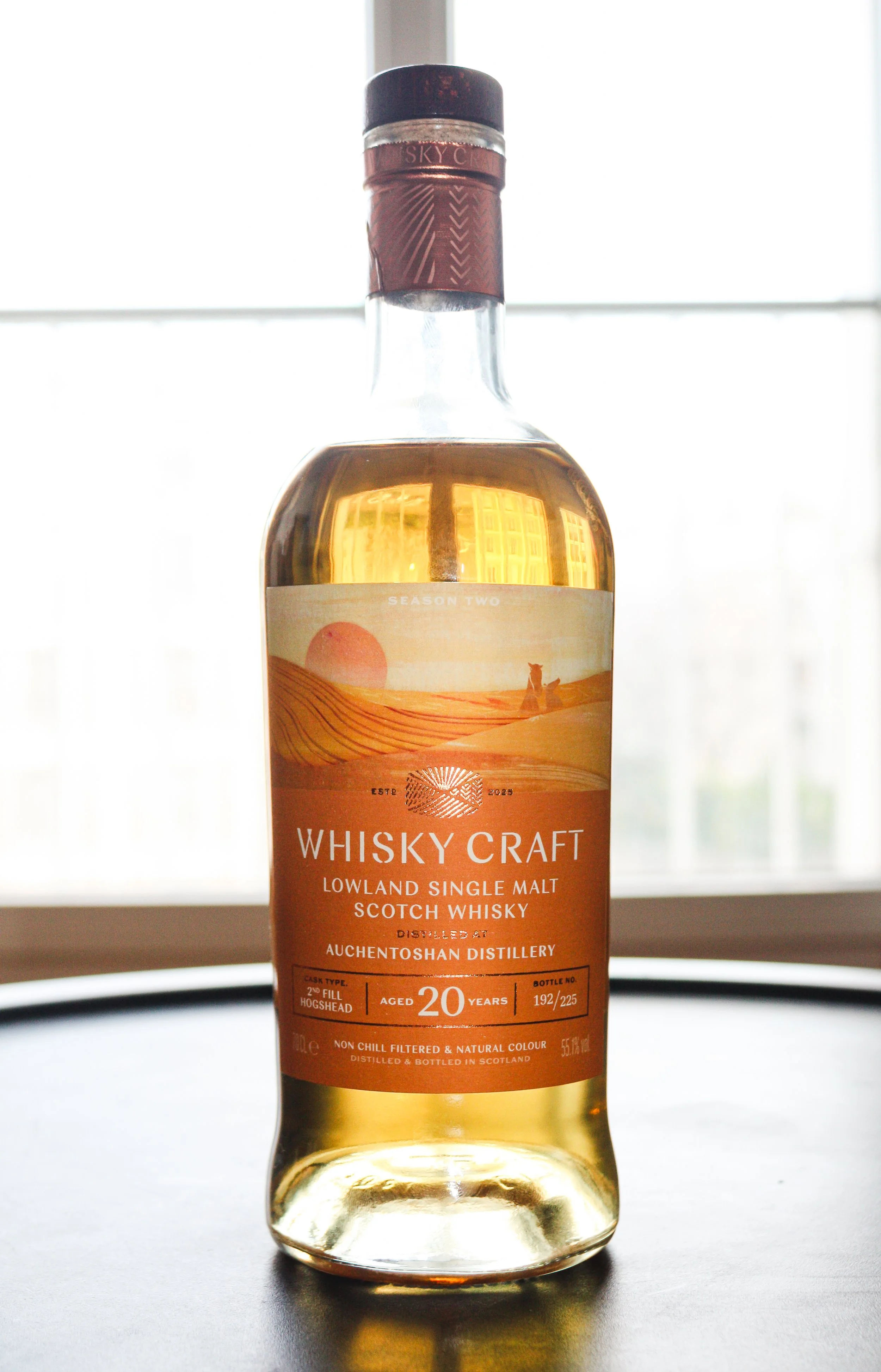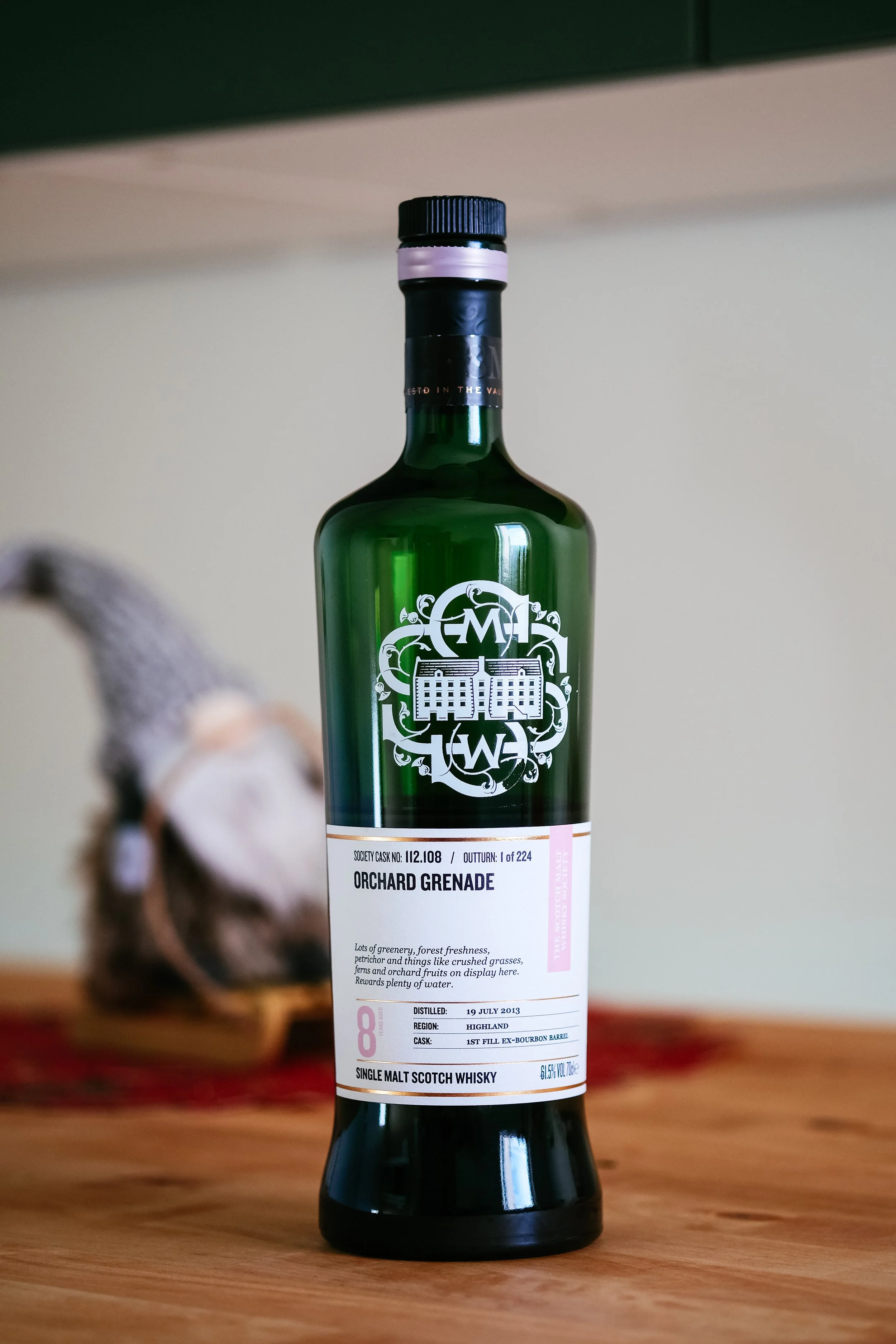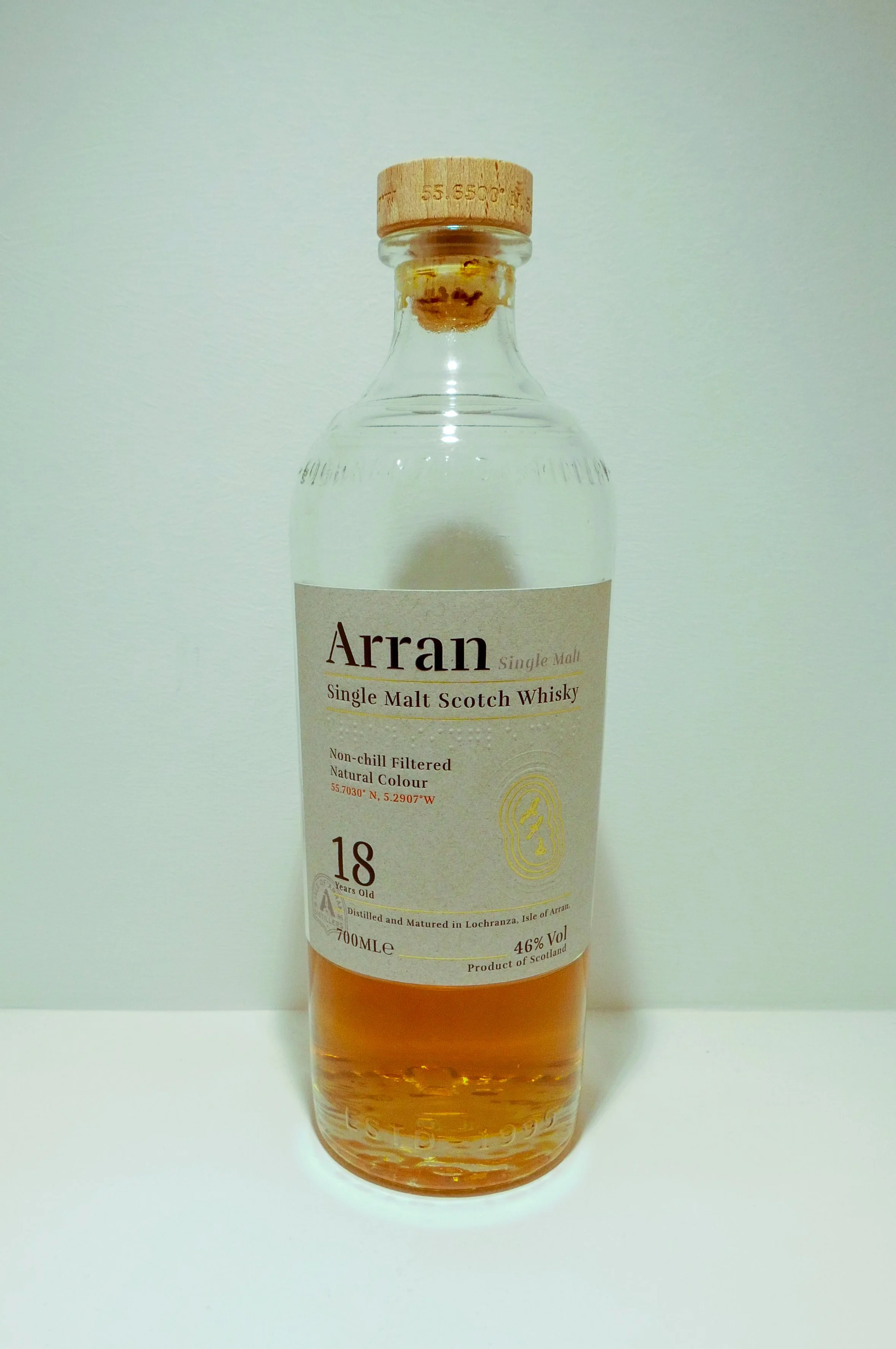Tullibardine The Murray Triple Port
Official Release | 46% ABV
Score: 6/10
Good stuff.
TL;DR
Dodgy branding, good whisky
Every so often, going against your better judgement pays off
Whisky appreciation comes in phases, I reckon. Upon first tumbling down the rabbit hole, I found it to be a case of getting my hands on as many different whiskies as possible, trying everything available within my budget, trying to determine my preferences.
In my case, this led to a serious case of tunnel vision (phase 1B, for the record), where I was fanboying hard on all things Laphroaig and Ardbeg. This led to me dismissing anything that wasn’t heavily peated, to the point where I became a bit of an Islay snob, willing to trashtalk those softie Speysiders or fruity Highlanders and firmly of the opinion that heavily peated whisky was superior. More fool me, indeed!
In hindsight, it might have been a necessary thing, that stubborn blind-sightedness of a young man finding his way in whisky wonderland. Equally, in hindsight, today’s forty-something Earie wouldn’t mind giving his younger self a bit of a talking-to in that regard.
It took a dedicated and very knowledgeable shopkeeper of my go-to liquor store at the time. Probably fed up with me coming in and always asking about the same two or three bottles, he encouraged me to try something else for a change, setting me up with a bottle of Benromach Peat Smoke. I took the punt, saw the light for a second time — so to speak — and soon realised the error of my ways.
Reaching phase 2 in the process meant acknowledging the fact that I was suffering from a severe case of Dunning Kruger. There was only one thing to do: swallow that slightly bitter pill of humility and start all over, only this time with a far more open mind. Inevitably, this led to a far more critical approach.
Phase 2 was the phase in which I was keen and eager to know more about, well, everything there was to whisky. I started to dig online, stumbling upon the likes of Ralfy, Roy, and Mark in the process. As a consequence, phrases like ‘un-chill-filtered’, ‘natural colour’, and other signs of integrity and quality suddenly made sense and became meaningful. With a hungry mind to live and learn, the next door of the rabbit hole truly opened for me.
This phase was one of ‘studying’ both theory and practice, refining my palate, but also reading tons of books on the subject of whisky and distilling and visiting distilleries where and when the opportunity presented itself. This phase will last you a very long time; luckily, it’s a very comfortable and happy, yet also increasingly expensive, place to be a happy enthusiast and dedicated amateur. You come to understand your own preferences, having gotten to know quite a few distillery profiles, and when buying new bottles, you find yourself in a position where you‘ll likely be relying on experience rather than blind enthusiasm (or you’ll have done your homework when buying a bottle).
The best bit is that you get to connect with a wide array of like-minded people. Getting your whisky geek on is a bit like joining an open university: you get to meet tons of people from all over, hang out and exchange thoughts and ideas, share experiences and drams, and have a few good laughs along the way.
I like to believe that I’m well on my way into this journey now, but I know well enough that there’s still an awful lot to learn and discover. The more you know, the more you understand that you know very little. That’s where I and a lot of us are right now, I think. People less familiar or interested in the subject might take a look at you and all the bottles and books you’ve collected and assume you have become quite the expert (or the alcoholic), but I’m very wary to call myself that — extremely reluctant to, even.
To truly be an expert on whisky (for the sake of this review, I’ll refer to that as phase 3), you’ll need to be at a point where even seasoned enthusiasts and true anoraks sit up and pay attention to what you have to say. In my book, that’s Dave Broom or Charlie MacLean territory.
So, being the seasoned, slightly educated enthusiast I like to believe I am, I tend to be fairly critical of the stuff I buy — my resources and shelf space are far from unlimited. And yet, in order to keep an open mind and challenge my own preconceptions, once in a while there should be a time and place to just blind-buy something purely on impulse.
Which is exactly what I did when buying the bottle I’ll review shortly.
Review
Tullibardine The Murray, Triple Port Cask Finish, 2008–2022
1st-fill bourbon finished in white Port, ruby Port and tawny Port casks, 18,278 bottles, 46% ABV
£60–65; widely available (paid €65)
I was browsing the whisky aisle in a store near me. It has a limited whisky selection of about 50 or 60 different brands and bottles, but occasionally there’s something really interesting to be found. In the past, I’ve discovered bottles of GlenAllachie 10yo cask strength and a single cask Speyburn there, so it ‘merits’ the occasional visit a few times a year. This time round, I was actually looking for something in particular, which I didn’t find, but I did stumble upon this Tullibardine.
There are several reasons to disregard this whisky entirely, and a lot comes down to the presentation and the packaging. It’s a bit excessive, for starters. Yes, it’s nice to have an impressive-looking box with a magnetic opener, but in today’s environmentally conscious world, it’s also a bit over-the-top, if you ask me. Also, you are somewhat paying for that fancy packaging, as this bottle costs around £60–£65. Not ludicrously expensive, of course, but for a 13–14 year old whisky, it’s still near pushing it.
Then there’s the general branding of Tullibardine. I get where they take inspiration from for these ‘The Marquess Collection’ bottlings: it’s a reference to William Murray, the Marquess of Tullibardine, who aided Bonny Prince Charlie in his efforts to retake the Scottish throne (and spent his final years captive in the Tower of London tower as a consequence). So, while it has nothing to do with the actual distillery, it plays the historical nostalgia card, referring to an 18th-century event soaked in Scottish romanticism. Fair play to them.
However, that “1488” combined with a royal crown is a bit of a thorn in my side. The main reason being: there wasn’t to be a Tullibardine distillery for another 400-odd years.
The year 1488 refers to the former brewery which was — in 1947 — converted into the distillery. It was once visited by King James IV in the late 15th century; apparently, he liked their beer, granting them a royal charter. How this is in any way relevant to the distillery eludes me completely, I’m afraid.
In fact, this historic date is beyond the point of stretching it; in my opinion, it’s downright misleading, making false claims to suggest provenance and pedigree. Both the date used to claim historicity and the reason behind it are anachronistic, and so, dear Tullibardine, do yourself and us all a favour and move with the times. Literally.
And since I’m ranting, why bottle a whisky at 46% ABV and then fail to mention any information regarding chill filtering? Or colouring? Insert a massive *sigh* here. Bottom line: give us factual, honest information, and we will embrace and celebrate you for it.
So why did I buy this release, when there‘s so much about it that grinds my gears? Three reasons. One, I was in that store anyway, not finding what I intended to buy. Two, for whatever reason I was willing to part ways with some of my whisky budget to find out, against my biases and preconceptions, if there was more to this than met the eye. Three, I was willing to take the punt if it meant finding a decent Port cask whisky.
Port cask matured or finished whisky is far from a guaranteed jackpot based on my experience, but when they get it right, whoever ‘they’ might be, I tend to really enjoy it. So when I saw a 14yo-ish whisky boasting a ‘Triple Port Cask finish’ on the label, I was intrigued.
When it comes to Port cask matured whisky, I think there’s still a fair bit of laziness involved, both from producers as from ourselves as customers. When it comes to sherry cask matured whisky, it’s practically standard practice these days to specify the type of sherry — PX, Oloroso, Palo Cortado, and so on — because we’ve come to know what these names imply in terms of flavour. So it’s kind of a big deal. More often than not, when it comes to Port casks used in whisky, we tend to settle for just that — ‘Port’ — despite there being rather big and significant nuances and differences to be found. Now, I’m anything but an expert on the matter, but I do feel we tend to do Port cask finishes a bit short sometimes. I’m generalising a fair bit here, but nonetheless, I feel it’s worth pointing out a few things before getting to the tasting notes.
Like sherry, Port comes in different flavour styles, from ultra-sweet to very dry. Like sherry, it comes from a demarcated geographical region: the Douro valley near Porto in Portugal, containing, again like sherry’s home, various subregions. While in theory over a hundred grape varieties can be used in the production of Port, only a handful are generally cultivated on a larger scale.
Unlike sherry, Port is made from both white and red grapes. The higher alcohol content compared to wine is established by adding neutral spirit halfway through the fermentation process. This instantly stops fermentation, upping the ABV and preventing any more sugar being converted into alcohol, and thus assuring a certain amount of sweetness in the process.
Generally speaking, there are 3 ‘styles’ of Port: tawny, ruby and white. Tawny is considered the ‘fancy’ stuff, as it’s fully matured in wooden casks, generally for a period of up to three years. Anything older will likely come with a vintage or age statement, whereas the indication ‘reserve’ usually means it has been matured for a period of 7 years.
Ruby port is more or less a ‘bulk’ product, as it’s not usually aged in the way we know and understand it, but instead stored in large stainless steel containers to prevent the oxidation which occurs in tawny Port (hence its ‘nutty’ character) and help maintain full fruitiness. Older ruby Port can, however, be aged for a few years.
White Port can really be any of the above: bulk product or matured in casks. Often, though, it’s a young, un-matured wine used as a mixer or in cocktails and highballs (although there are also some well-aged white ports on the market).
All that said, what’s this whisky all about? Initially matured in bourbon casks, this one was then finished in all three types of Port casks. It would have been nice to have been given a bit more information as to which type of casks, or for how long. Again: give us more factual information rather than some romantic yet totally unrelated story.
Nose
Rhubarb, vanilla, honey, quite a lot of fruit (berries, melon, a whiff of sweet grapes, some apples), and something gentle and pleasantly soapy, transforming into a floral greenhouse sweetness. Given time, some soft wood notes shine through as well. Pleasant and agreeable.
Palate
It has significantly more ‘depth’ on the palate. A distinctive oaky character for starters. There’s a ‘rosy’ element going on, like rosewater, and lots of berries with a lighter fruity-floral note as well. A dry, mouthcoating mouthfeel leads the way into a long and drying, oaky and gently spicy finish.
The Dregs
This makes for super easy drinking, yet it’s engaging enough to savour as it has a pleasant development, revealing some unexpected yet welcome depths of flavour.
I’m glad I’ve ignored my inner alarm bells on this one, as it’s exactly the sort of whisky you can enjoy when you just want to have something nice and decent to sip.
I was hoping to get some more distinctive flavours and character from the different port casks, bringing some more complexity to the overall experience, as that might have lifted this from a perfectly decent whisky to being an ‘actually, this is very good’ sort of whisky, but knowing (official) Tullibardine releases, that’s generally not really what they are about. Easy drinking and enjoyable is more their strong suit, and this brings you exactly that.
Score: 6/10
Tried this? Share your thoughts in the comments below. EA
-
Dramface is free.
Its fierce independence and community-focused content is funded by that same community. We don’t do ads, sponsorships or paid-for content. If you like what we do you can support us by becoming a Dramface member for the price of a magazine.
However, if you’ve found a particular article valuable, you also have the option to make a direct donation to the writer, here: buy me a dram - you’d make their day. Thank you.
For more on Dramface and our funding read our about page here.
Other opinions on this:
Got a link to a reliable review? Tell us.

































